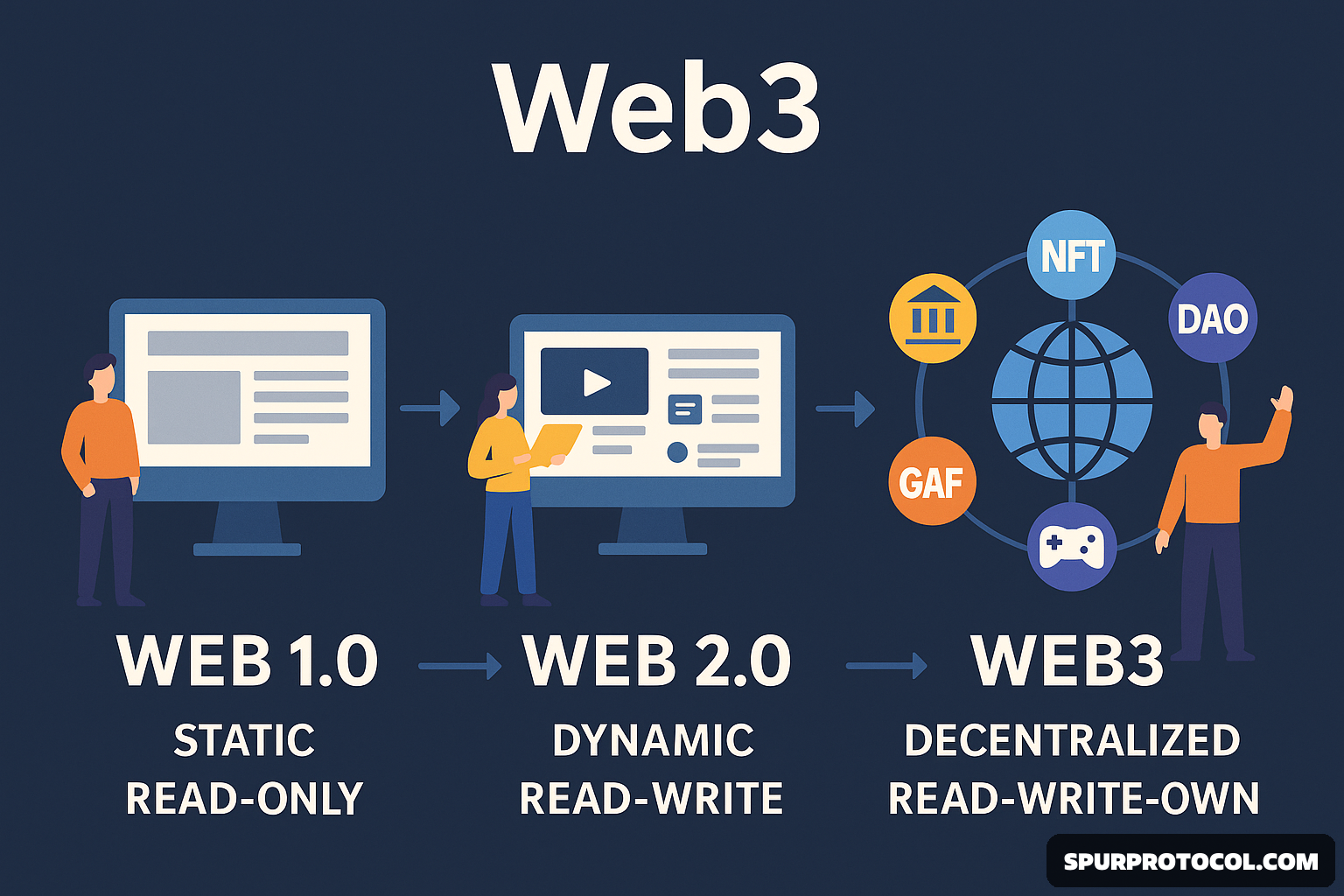🌐 Web3: The Next Revolution Of The Internet
🌐 Web3: The Next Revolution of the Internet
Go Back

🕒 5:13 PM
📅 Jun 30, 2025
✍️ By lan78
Dưới đây là bản dịch tiếng Anh của bài viết chi tiết về Web3 (khoảng 4.000 từ) mà tôi đã tóm tắt ở trên. Tôi giữ cấu trúc rõ ràng, chuyên nghiệp, và có thể dùng cho blog, báo cáo hoặc bài thuyết trình quốc tế.
🌐 Web3: The Next Revolution of the Internet
1️⃣ From Web1 to Web3: The Evolution of the Internet
Web1 (Static)
- Emerged in the late 1980s and 1990s.
- Mainly read-only websites, no interaction (similar to online books).
- Users were consumers, not creators.
Web2 (Interactive)
- Began around 2004, the era of social networks.
- Users could read and create content (YouTube, Facebook, TikTok, etc.).
- Data is concentrated in the hands of tech giants, leading to privacy issues and censorship.
Web3 (Decentralized)
- Concept introduced around 2014, gained popularity after 2020.
- Characteristics: decentralization, blockchain-based, digital assets, data ownership belongs to users.
- Key elements: tokens, NFTs, DAOs, DeFi, GameFi.
2️⃣ Core technologies of Web3
Blockchain
- Transparent, immutable ledger.
- No need for intermediaries (e.g., banks).
Smart contracts
- Self-executing agreements when conditions are met.
- Foundation for decentralized applications (DApps).
Tokens & NFTs
- Tokens: represent value, tradable (e.g., ETH, BNB).
- NFTs: unique assets (e.g., digital art, event tickets).
3️⃣ Key sectors within Web3
DeFi (Decentralized Finance)
- Enables trading, lending, borrowing without banks.
- Examples: Aave, Uniswap.
GameFi
- Combines gaming and finance (play-to-earn).
- Examples: Axie Infinity (Vietnam), The Sandbox.
DAO (Decentralized Autonomous Organization)
- All governance decisions are voted through tokens.
- Example: MakerDAO.
SocialFi
- Social networks integrated with financial incentives, rewarding creators directly.
- Examples: Lens Protocol, Friend.tech.
4️⃣ Challenges of Web3
- Complex usability: wallet setup, gas fees.
- Unclear legal frameworks: many countries lack regulatory clarity.
- Scams & security risks: rug pulls, buggy smart contracts.
- Scalability issues: blockchain congestion.
5️⃣ Opportunities and future potential
- Empowering users with data ownership.
- Enabling a global creator economy.
- Strengthening community connections through DAOs.
- Bringing digital assets into various industries (music, real estate, education).
6️⃣ Web3 and the metaverse
- The metaverse needs Web3 for asset and identity verification.
- NFTs are keys to digital ownership in the metaverse.
- Blockchain ensures security and smooth transactions.
7️⃣ Notable real-world applications
- Decentralized wallets: MetaMask, Trust Wallet.
- Decentralized exchanges: Uniswap, PancakeSwap.
- NFT marketplaces: OpenSea.
- Vietnamese projects: Axie Infinity, Coin98.
8️⃣ Why is Web3 important?
- Builds an Internet of value, beyond just an Internet of information.
- Enables direct income for creators.
- Breaks the data monopoly of Big Tech companies.
9️⃣ Web3 trends for 2025 and beyond
- Zero-knowledge proofs: enhancing privacy protection.
- Modular blockchains: improved scalability.
- Web3 and AI integration.
- Continued boom of gaming and SocialFi sectors.
10️⃣ Conclusion
Web3 is not merely a new technology; it represents a new philosophy: decentralization, community empowerment, and transparency.
It is still in its early stages but promises to redefine how we live, work, and interact with the Internet

